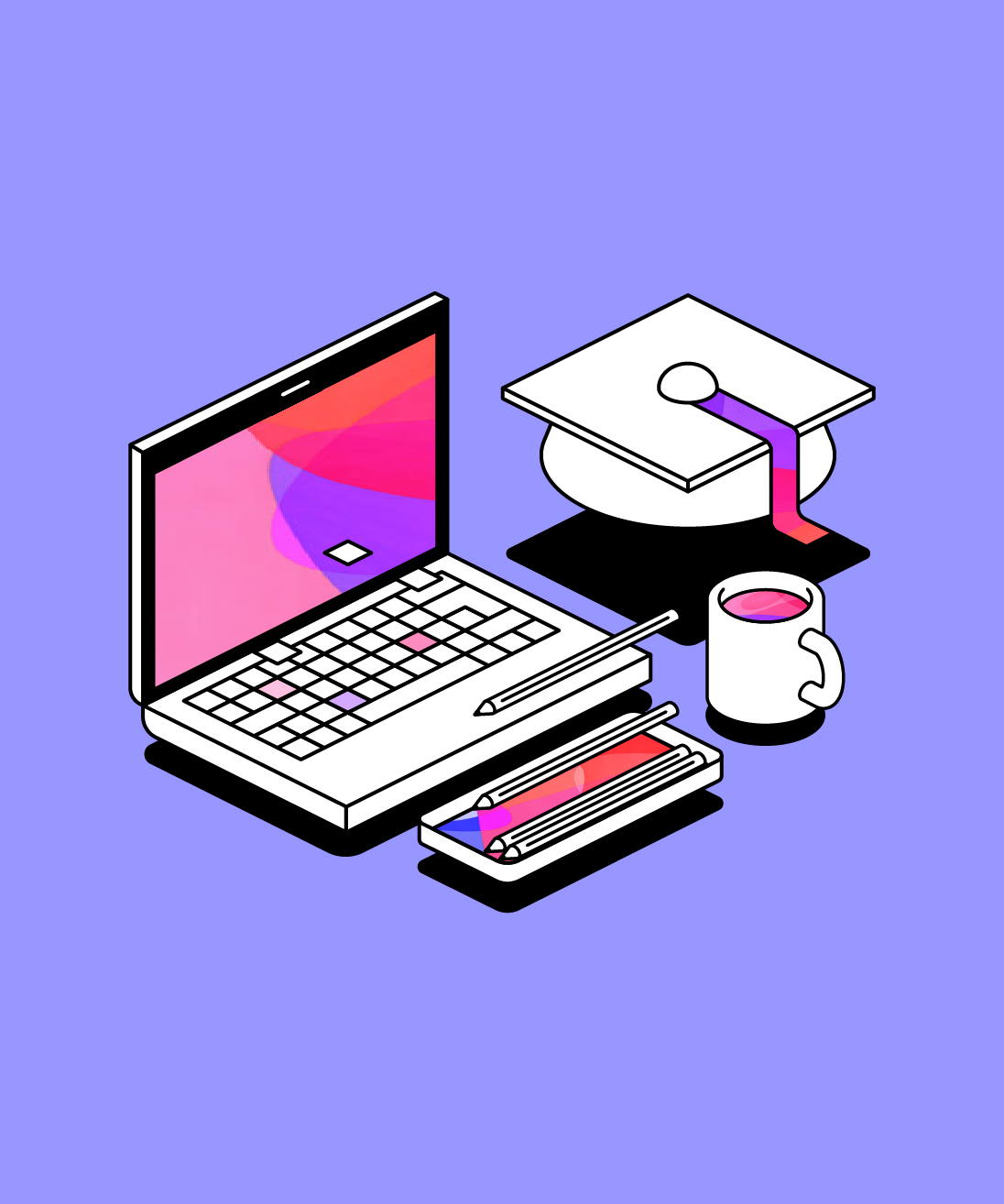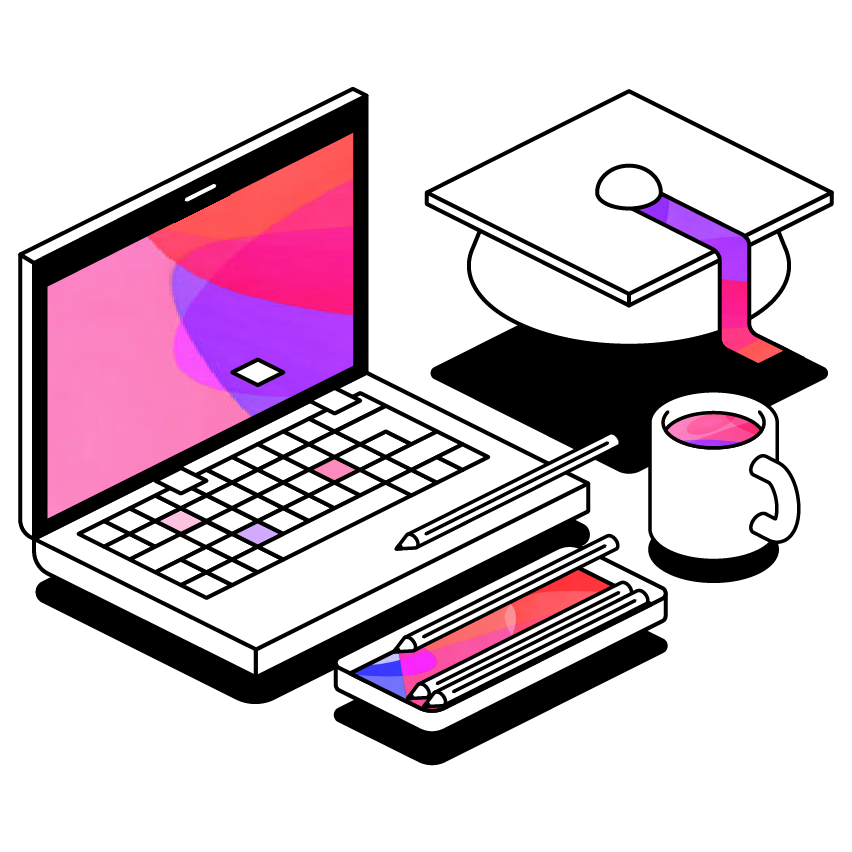A guide to assistive technology for university success
Discover the powerful world of assistive technology in higher education, designed to empower students to thrive academically. Explore what assistive technology is and how technology, like Genio, can transform note taking and boost academic success.
 4 min read
4 min read
 Published: 23 Apr 2025
Published: 23 Apr 2025
 Phoebe Hoar
Phoebe Hoar


Ever sat in a lecture, your pen flying across the page, trying to capture every single word, only to look down later and see a jumbled mess of half-sentences and missed connections?
Maybe your mind races faster than your hand can write, or perhaps focusing on listening and writing at the same time feels like trying to juggle too many balls.
If that sounds familiar, you're definitely not alone. For many students, especially those with learning differences like dyslexia or ADHD, traditional note taking can feel like a major hurdle.
But what if we told you there are tools out there designed to be your academic sidekick, helping you capture information in ways that actually work for you?
That's where assistive technology (AT) comes in, and it's a game changer.
What is assistive technology?
Assistive technology (AT) as your powerful ally for navigating these challenges. Simply put, AT is any tool designed to help you learn, participate and succeed in your studies.
It’s not about ‘fixing’ anything, but about providing the right tools to help you unlock your full potential. You might already use AT, such as having dark mode on to help you read texts or using larger fonts.
How is assistive technology changing?
Assistive technology isn't new, it’s been helping us for a long time! But, with recent technological advancements it’s becoming smarter, and even more helpful.
Duolingo, Siri, TikTok captions, voice notes…these can all be considered assistive technology! AT is becoming more seamlessly integrated into mainstream platforms too, you’ll likely have used it without even being aware of it!
Learning anywhere, anytime
It used to be common to only have access to AT in the classroom or lecture hall. But, with online tools and apps, you can access most AT’s on your phone, laptop or tablet - meaning you can use it wherever you’re studying!
Think about how much you already use your phone or tablet for studying. Now, imagine your essential AT tools being just as accessible, wherever you are.
That's the beauty of mobile and cloud based AT! Whether you're in the library, a coffee shop, or your dorm room, tools like screen readers that can read web pages aloud, or organizational apps that help you plan your assignments, are right at your fingertips.
Smarter tools with AI
AI can help with things like turning your spoken words into text easily (know as speech to text), predicting words as you type to save time, and even helping you understand complex readings. Not to mention the use of AI for summaries and creating assignment plans.
Making learning more engaging
AT isn’t just here to make studying accessible, it can include fun elements to actually help you stay motivated and focused too.
Think of Duolingo for example, it can be considered a form of AT for individuals who have difficulty learning or retaining new information, or who benefit from a more engaging and structured learning approach.
The spaced repetition, sensory elements and self paced learning helps you pick up your new language, while the points, leader board and streak keep you motivated and engaged!
What are the different types of assistive technology?
There’s lots of different forms of assistive technology, to meet the diverse range of needs. Here’s a few examples of types of AT you might find helpful, for you.
If reading feels like a struggle: Screen readers can 'read' your textbooks and online materials aloud. Or you could use screen magnifiers to make text and images easier to see.
If listening and writing is tricky: Having captioning helps you follow videos and lectures. If you have hearing impairments you might already be familiar with FM or DM systems which can make it easier to hear professors in noisy classrooms.
If writing and organizing your thoughts is challenging: Many apps and platforms integrate speech to text to let you write with your voice. There’s also accessible mind mapping apps such as Mind View to make it easier for people, especially those who are neurodiverse, to visualize thoughts.
There's a whole range of software and AT’s that can help different needs and situations, we’re going to take a deeper look at how Genio Notes can help with note taking challenges!
Using Genio Notes as a note taking tool
Genio Notes is a tool specifically designed to make note taking less stressful, more effective and more engaging for students like yourself. If you have a barrier to learning, such as ADHD, hearing impairments or processing difficulties such as dyslexia, Genio Notes can be a really useful tool to help you take better notes during classes.
Never miss a word
Recording lectures means you can go back and listen again at your own pace, allowing you to fully process each lecture. You can also use the transcription feature if you have difficulty hearing and/or typing.
Jackie was diagnosed with Parkinson's disease in 2015 and has difficult typing with just her thumb, so, she uses the transcription feature to create her notes, "I now just switch the microphone on and let Genio Notes do all the hard work of transcribing what’s being said."
.gif?width=750&height=403&name=BLOG%20transcription%20body%20(1).gif)
Find what you need fast
Remember writing something down but just can’t find it in your sea of notes? Not anymore.
You can label your notes using review labels, making them easy to find and revisit when needed. There’s also a handy search tool so you can find specific notes quickly and easily.
See your notes clearly
Using Genio Notes to type your notes keeps them simple, and structured. You can simply add a heading (which will be pinpointed to what your professor is saying) and bullet point notes below, creating simple, uncluttered notes to study from.
Having Wikipedia integrated also means that if you need definitions, you can just link them straight to your notes. That goes for images and diagrams too - you can add all of them into your notes to make it easier to understand and visualize the learning material.

Check your knowledge
Each time you finish a set of notes, you can use the Quiz Me function to generate a multiple choice quiz to check what you've learnt - great for when you’re revisiting notes before an exam.
AI outline also provides a handy little summary if you’ve got chunky notes and need a quick reminder or overview of the lecture.
Remember what we said about AT being accessible anywhere now? Well, Genio Notes really is - with the mobile app you can record all your lectures straight from your phone! So you’ll have a word for word transcript of your professor right in your pocket. You can go over your notes and recordings (almost) anywhere!
"With Genio Notes and the outline feature, I’m able to quickly review the key points of a lecture whenever I need and anywhere thanks to the mobile app”
Abby, University of Maryland
Harnessing the power of assistive technology in higher education isn't just about overcoming challenges; it's about unlocking your unique potential and creating a learning journey that truly works for you.
Remember, you are not alone in navigating your academic path, and a wealth of innovative tools and dedicated support services are available to help you thrive.
Embrace the possibilities, explore the resources on your campus, and discover the assistive technologies that can become your personal toolkit for success.





